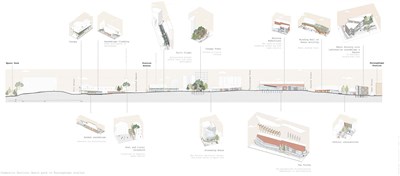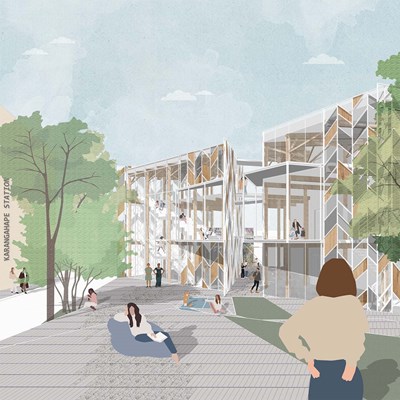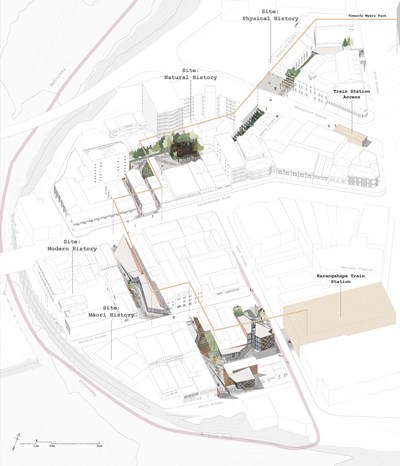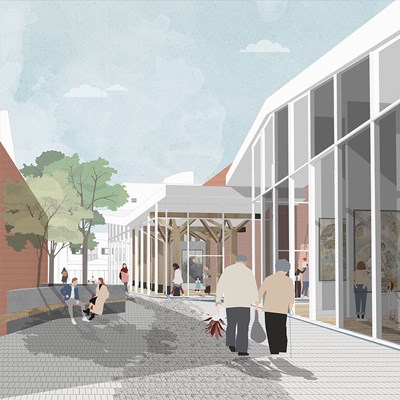Rhiannon Churchward from Te Whare Wānanga o Wairaka, Unitec School of Architecture, is a finalist for her project 'Interstitial City'.
Project description
This project aims to reclaim the porosity in the urban fabric of Karangahape to create pedestrian connections through a series of architectural and urban design interventions developed in two phases. The first is creating a physical connection for pedestrians, and the second is building a cultural connection to the Karangahape area.
Moveability is inherent to the quality of life in cities. However, for the last 50 years, Auckland has been predominantly dominated by car-orientated urban design. While change is occurring slowly, now is the time to actively explore the potential of how people move within our cities through pedestrian-focused design. The design attitudes of the previous 50 years have left a physical mark on the Auckland urban landscape. Large city blocks and wide roads are still obstacles that affect the walkability and connectivity of the city.
These issues are present in the Karangahape area. Karangahape Road was cut through and off by the motorway construction, leaving it alienated from its surroundings. This condition significantly changed the area’s social context and has contributed to a unique cultural richness. The current social character is again facing change with the construction of the Karangahape train station, which is expected to spark significant development in the area.
In the urban context, the quality of the architecture considerably shapes the environment and how people move through it as pedestrians. Porosity, public space, and urban acupuncture theories are first explored to inform a design that effectively facilitates walkability, and the cultural narratives present in Karangahape to foster physical and social connection.
The project is based on creating a journey that preserves and promotes the cultural landscape while also utilising porosity for pedestrian movements. Connectivity is achieved through interventions that tap into porosity and public space in the urban fabric and interweave a responsive programme to the sites and their narratives.
Jury citation
This intricate and ambitious plan provides a blueprint for what true pedestrian-centric design could look like in one of Aotearoa’s busiest and most hotly contested sites. Auckland’s Karangahape Road has more than six centuries of human occupation written upon it, from its use as an Ara or pathway between the Waitematā and Manukau harbours to the construction of State Highway One which cut the district off from its neighbouring communities. Now, the City Rail Link project looks likely to reinvent this ridgeline hub of art and commerce once again.
Using the Te Aranga design principles as a shaping framework, the Interstitial City is aware of its cultural history and weaves it back into the urban fabric of Tāmaki Makaurau, along with elements of the landscape and natural heritage of the area. The patterns, textures and structures of the area’s flora and fauna inspire and uplift this design, including a living structure that mimics a forest canopy and creates a leafy green oasis in the city.
The concept of porosity is deployed to create more opportunities for pedestrians to discover and learn about the area as they move through and reclaim a part of the city that was given up to cars in the 1960s. For example, overlapping and sometimes contradictory stories of the sex industry, which moved into the area in the 1970s, are given space and air to be told and heard, rather than swept under the rug or erased by the march of gentrification.
Deeply researched and passionately understood, Rhiannon’s empathetic project demonstrates how architecture and urban design can address social issues and, in this case, begin to stitch a damaged city back together for the people who live there.








